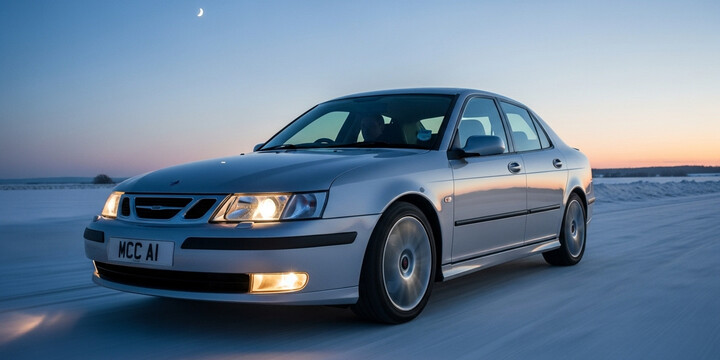
SAAB 9-3 (1998-03) 3DR COUPE 2.0T SE AUTO
The SAAB 9-3 (1998-2003) 3DR Coupe 2.0T SE Auto is a stylish and sporty coupe that offers a distinctive alternative to more common hatchbacks and saloons in the UK market. Known for its sleek design and dynamic driving experience, this model appeals to drivers looking for a combination of comfort, performance, and a touch of Scandinavian elegance. Typically used by individuals who appreciate driving pleasure over practicality—such as professionals or style-conscious commuters—the SAAB 9-3 coupe is a great choice for those seeking a reliable, well-designed vehicle that stands out.
What makes the SAAB 9-3 (1998-03) 3DR Coupe 2.0T SE Auto notable includes its balanced handling, refined ride quality, and innovative safety features. It boasts a reputation for dependable performance and solid build quality, making it suitable for daily driving and occasional longer trips. Compared to rival sporty coupes, it offers a comfortable interior and a unique design that has aged gracefully, retaining appeal for used car buyers. With an average mileage of around 116,684 miles and an average of three previous owners, this model remains an accessible choice for those seeking a distinctive, well-maintained used car. If you’re considering a stylish, reliable coupe with a solid heritage, the SAAB 9-3 2.0T SE Auto could be a compelling option.

average use

The most recent mileage readings for this sample of SAAB 9-3 (1998-2003) 3-door coupe 2.0T SE AUTO vehicles are evenly distributed across five mileage ranges: 60,000-70,000 miles, 80,000-90,000 miles, 110,000-120,000 miles, 140,000-150,000 miles, and 160,000-170,000 miles, each accounting for 20% of the vehicles. This suggests a broad spread of vehicle usage, with no particular mileage range dominating the dataset. Such distribution indicates that these vehicles are actively used across a wide spectrum of mileages, which could be useful for potential buyers or owners assessing typical usage patterns.

vehicle values

The data indicates that the private sale price for the SAAB 9-3 (1998-03) 3DR Coupe 2.0T SE Auto is concentrated entirely in the £0 to £1,000 range, with 100% of the valuations falling within this bracket. This suggests that, based on available data, these vehicles tend to be valued at or below £1,000 when sold privately. The absence of data in higher price ranges may reflect their age, condition, or market demand, indicating that these models are generally considered budget or entry-level options in the used car market.

production years

The data indicates that among the sampled SAAB 9-3 (1998-03) 3DR Coupe 2.0T SE Auto vehicles, the majority—60%—were manufactured in 2002. Additionally, 20% were from 2003, and another 20% from 2000. This suggests that the most common manufacturing year for this model in the sample is 2002, which could reflect production peaks or market preferences surrounding that period.

colour popularity

The data indicates that the majority of SAAB 9-3 (1998-03) 3DR Coupe 2.0T SE Auto vehicles are painted black, accounting for 80% of the sample. Red is a less common choice, representing 20%. This suggests that black is the predominant colour preferred by owners of this model, possibly reflecting a classic or popular styling choice for the vehicle during its production years.

ownership cycle

The data indicates that for the Saab 9-3 (1998-2003) 3-door coupe 2.0T SE Auto model, the majority of vehicles (60%) have had four registered keepers. Additionally, a smaller proportion (20%) each have had three or six keepers. This distribution suggests that most of these vehicles tend to have a relatively consistent number of owners, with a significant number remaining with four keepers, possibly indicating moderate vehicle longevity and ownership stability. The presence of vehicles with six keepers might point to some cars experiencing more frequent ownership changes over time.

engine choices

The data indicates that all sampled SAAB 9-3 (1998-03) 3DR Coupe 2.0T SE Auto vehicles are equipped with a 1985cc engine capacity and utilize petrol as their primary fuel type. This suggests a consistent specification across the available data for this model, with no variation observed in engine size or fuel type.












